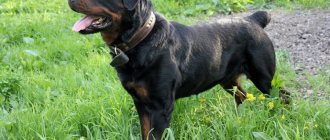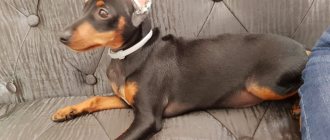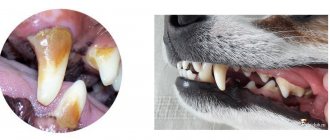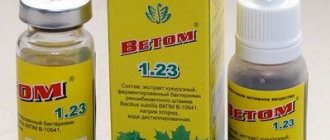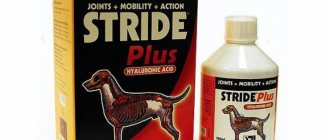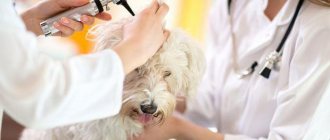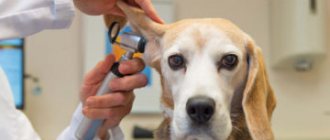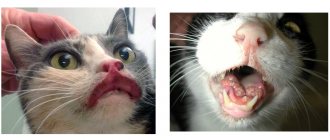Dobermans are an ancient breed that has undergone some changes throughout its development.
She became more friendly, obedient, and also acquired a pleasant and sophisticated appearance.
Their breed's character is free of malice and unreasonable aggression, which makes it ideal for training, tracking, guard duty, hunting, sports and many other areas of activity.
The Doberman's abilities make him an almost universal dog that will find a calling in any job.
Breed Features
These elegant dogs with an aristocratic appearance seem to be capable of everything except the ability to tell their owner about everything that is boiling in their soul. Legends can be made about the reaction speed of the Doberman. While a dog of another breed is busy with one thing, a Doberman can do ten. He learns easily thanks to his amazing powers of observation and ability to imitate, comprehending his own mistakes.
Many owners note that sometimes it seems that their pets are capable of reasoning logically. People who are at least a little familiar with this breed are not at all surprised that the Doberman opens doors on its own. Some dogs even move a chair towards the table, as if hinting to the owner that they would not mind joining the meal.
Appearance
True fans of this breed are confident (and, it must be said, quite rightly) that the Doberman Pinscher is the standard of beauty in the canine world. The animals have a spectacular appearance, harmonious build, a high level of intelligence and a superbly developed protective instinct.
The modern Doberman is a dog of above average height: males reach 72 cm at the withers, weighing around 45 kg, females are slightly smaller: 68 cm, weighing no more than 35 kg. The physique of these animals is dense, strong, muscular, but not as massive as, for example, a Rottweiler. Representatives of the breed are endowed with an elegant, chiseled silhouette. The coat is silky and smooth. It only emphasizes well-developed muscles. The breed standard allows for brown or black and tan coloring.
Prohibition on cupping
In Russia, we are accustomed to seeing Dobermans without a tail and with sharp, high-set triangular ears. Few people know that the shape of cropped ears has already changed several times. At first these were small, neat triangles, but in recent years very high ears have become fashionable. It is believed that this is the merit of an experienced veterinarian and owner, since correct ear placement is a complex and lengthy process that should be approached with the utmost responsibility.
In many countries, including Germany, the homeland of the Doberman, it is prohibited to crop Doberman's ears (and tails too). The appearance of a floppy-eared dog with a long thin tail is somewhat unusual, but this is the requirement of conservationists. Nevertheless, in our country, representatives of this breed are still subjected to this operation. A reasonable question arises: why do Dobermans have their ears and tail cropped? Is such a procedure really necessary?
Is it necessary to dock the tail and why?
A similar situation exists with tail docking. Dobermans with a short tail are more common than those with a long one .
Most of all breeders carry out this procedure with puppies, so it is incredibly difficult to meet long-tailed Dobermans.
There is one catch associated with this - due to docking, the genetic shape of the tail is not fixed in any way in the standard.
Therefore, it is impossible to determine which tail of an undocked dog is suitable and which is defective. A puppy can be born with a completely different tail - bent, twisted, raised up.
This is another reason why it is better for a Doberman to have this part of the body docked, because you will always be at risk when participating in exhibitions or competitions.
NOTE!
The tail must be docked if the dog develops in hunting and fighting activities.
Tail docking is a procedure that also depends on the wishes of the owner, but the shortened appearance of the tail is the most acceptable feature for a Doberman.
Is cupping necessary?
It must be admitted that today, at least in our country, the cropped ears of these animals are distinctive breed characteristics. However, newcomers to dog breeding, who are aware of the ban on foreign dog handlers from carrying out such an operation, ask: “Why do Dobermans have their ears cropped?”
Previously, fighting and hunting dogs were subjected to this procedure. In this case, the risk of additional injuries during battle or hunting was reduced. Despite the Fédération Cynologique Internationale (FCI) ban introduced several years ago, dog breeders in many countries continue to crop Dobermans' ears and tails. Thus, a breed standard was formed, emphasizing the special shape of the tail and ears of these animals.
Today, hunting has lost its former popularity, and dog fighting is banned in many countries. In theory, the need to crop and set the ears of Dobermans should naturally disappear. However, dog breeders with many years of experience stubbornly insist on carrying out such operations. They claim that this procedure reduces the risk of necrosis, ulcers, various neoplasms, wounds and injuries. They are sure that docking is a kind of animal protection.
Ear and tail docking for Doberman dogs
Docking the tail so that it is not only the correct length, but also free of post-operative scars and stitch marks has always been a problem. Often, for one reason or another, it is necessary to re-form them, which not only takes time, but also costs additional money. Some of them are sewn up, others are not.
During one of his visits to England, Robert H. Walker, of Ferring Nurseries, explained how tails were docked there. The tails he docked were beautiful and without any traces of stitches. Actually, the method itself turned out to be far from new, but all veterinarians initially objected to it, as they were afraid of the addition of a second infection. However, it is no more dangerous than those used in the United States.
This method of docking a Doberman's tail uses an elastic band for model airplanes (3 mm wide) or a regular rubber band (up to 20 cm long for each puppy). Some people pre-cut the hair on the tail in the area where the tourniquet is supposed to be applied so that it does not get caught under it. Then a mark is made with a felt-tip pen on its lower surface. Doberman tail docking is carried out 36 hours after the puppy is born.
The operation is carried out in the presence of an assistant holding the puppy with its tail turned towards the operator so that he can apply a rubber tourniquet to the marked area and tie it with a simple reef knot. The operator makes a normal half-loop in the air (clockwise so it faces down) and brings it in from the underside of the tail.
The assistant holds it, and the operator brings the loop to the mark made with a felt-tip pen, pulls it slightly and checks again whether it has moved from the mark. You should not do this too strongly, because the puppy is growing and after 3-4 days the loop can cut through the skin, but it should not be weak either, otherwise it will simply slide off the tail.
You should pull the loop carefully, with both hands, while making sure that it does not move from your intended place. About a quarter of all puppies tolerate this procedure easily, squeaking perhaps only once as the knot is tightened, but not as the tail falls off. Now you have to tie a knot, connect both hands holding the ends of the thread, which slightly increases the compression of the tail - it should be at the top, and you just have to trim the loose ends, leaving about 0.5 cm so that the mother cannot bite them off (they should not be too short, otherwise they may come undone).
After 24 hours, blood circulation in the tail will be completely disrupted, and after another 5-6 days it will simply fall off. If it takes a little longer, don't be alarmed. After three days, you should apply an oil solution of an antibiotic, such as Pananalog. Thanks to this method, as long as the tail was looked after, well cared for and kept clean, he never encountered infection problems. The results, I must admit, are simply beautiful, and if you place the knot exactly above the joint, then there will be no marks left on the tail at all.
We suggest you read: How to clean a cat's ears at home
Having finished the procedure with the tail, immediately remove the dewclaws (if, of course, there are any). It's not as scary as it seems. You just need to take disinfected scissors with curved ends (the kind used for pre-show grooming of a dog's whiskers), place them at the very base of the finger (with the curved surface outward) and cut it off (while making sure that you do not leave the main phalanx). Then, for a few seconds, firmly press a cotton swab dipped in hemostatic fluid to this area. The wound, as a rule, does not bleed.
If you are unable to perform the tail bandaging and dewclaw trimming procedure yourself, contact your veterinarian. Most likely, he will suggest that you have your tail docked surgically and stitched up. What do you gain by performing these treatments at home? And the fact that you do not expose your pets to the risk of contracting particularly dangerous diseases such as parvovirus and plague.
If the tail is docked surgically, it is better to leave no more than one centimeter. To avoid tension on the skin, it is first shifted to the end of the tail, then the tail vertebra protruding from the wound is isolated and the skin is sutured, simultaneously stopping the bleeding. Even after this procedure, you should apply a tourniquet made of round cord rubber, which was used when docking tails, at the base of the tail for about ten minutes.
The disadvantage of this method is that the bitch, while licking the puppies, often bites through the sutures and an unsightly protrusion or scar appears in this place, which has to be removed when the ears are cropped. True, some veterinarians are “easy on their hands” and immediately dock the tail correctly, so that it no longer has to be redone.
At what age do Doberman ears cropped?
In many European countries, puppies are handed over to new owners after two months from birth, and therefore this operation, as well as post-operative care, falls on the shoulders of the breeder. As you know, in Russia puppies are given to new owners at the age of four to six weeks, so it is quite natural that new owners have to crop Doberman ears. However, by prior agreement, the breeder can also do this.
To understand how much to crop a Doberman's ears, you need to listen to the opinions of experts. They differ slightly, but not significantly. Veterinarians say that theoretically such an operation is possible at almost any age. But there is the most suitable period for surgery. So, at what age is it preferable to crop Doberman ears? When the baby reaches the age of one and a half to two months.
Is surgery possible at other ages?
Sometimes it happens that owners miss this period for some reason. How many months are Doberman ears cropped in this case? Experts do not recommend this operation for puppies from twelve weeks until the complete change of teeth. This ban is explained by the fact that ear placement during the period of teeth change, growth and bone formation is very difficult, since during this period the supply of mineral substances in the animal’s body is not stable and minimal.
By the age of three months, the puppy's permanent teeth begin to form. For their strength and proper growth, almost pure calcium is needed in greater quantities than is necessary to strengthen the ear cartilage. Moreover, at an earlier age, wounds bleed significantly less and heal much faster. If you crop a Doberman's ears and tail at an early age, the animal will more easily endure the operation.
Some veterinarians believe that this procedure should not be delayed until one and a half months and recommend it be carried out three to ten days from the moment of birth. In newborn puppies, blood circulation is much slower and the healing process is faster. Nevertheless, the overwhelming number of veterinarians prefer the age of one and a half to two months. True, at this age the operation is already performed under anesthesia.
Price
The younger the Doberman is, the cheaper docking costs. Puppies up to a month old can have drooping ears installed for 500-1000 rubles. The price of the operation for puppies up to six months is 2000-3000 rubles.
The veterinarian can come to your home with tools and medications. In this case, the cost of trimming the skin increases by 1000 rubles. The final amount is also influenced by the dosage of anesthesia, the qualifications of the doctor and the prestige of the clinic.
In our country, the Dobermann, which has an undocked tail, differs in appearance from its brothers in the brood. Why is this part of the dog’s body cut off? When an adult animal wobbles, it can injure itself on bushes, trees, or furniture. The likelihood of other dogs biting this protruding area increases. The price of such cupping is 3000-5000 rubles.
Preparing for surgery
Dog experts say that all veterinarians can crop Doberman ears. However, only specialists of the highest level can carry out the operation competently, in compliance with all sanitary standards. It’s quite strange to hear the question: “Is it possible to crop a Doberman’s ears yourself?” In some publications you can even find “instructions” for such an operation. The answer to such a question can be only - in no case.
Before deciding on such a procedure, study the reviews and recommendations of Doberman owners, if possible, contact them and find a doctor to whom you will entrust your baby. Quite often such information is given in breed clubs, although they are not available in all cities.
Many people are interested in where to crop Doberman ears. It seems to us that based on all of the above, the answer is obvious - in a well-established clinic, where experienced professionals work. Unfortunately, it is quite common to encounter stately, beautiful Dobermans with ugly ears. Lack of professionalism or a mistake by a veterinarian can disfigure the appearance of an animal.
The dog should not be fed on the day of surgery. Two hours before the procedure, do not let the puppy drink.
How is the operation performed?
The animal is given anesthesia at the age of one and a half to two months. When it begins to act, the operation begins. Veterinarians adhere to the rule - to crop a Doberman's ears no more than 2/5 of the auricle. If this rule is neglected, then there is a chance that after the operation the dog’s head will look disproportionate.
Clips are installed along the cutting line, as well as to fix the desired shape on the baby’s ears. They can be straight, curved, zigzag. Using a medical scalpel, the doctor cuts off the hanging part of the ear, and then uses scissors to form a lobe. A suture is placed on the wound. It is very important, and experienced specialists know this, not to catch the cartilage: otherwise the healed ear will be disfigured. The same manipulations are carried out on the second ear.
Puppy owners are interested in how long it takes to crop a Doberman's ears. The operation can last no more than half an hour, but in some cases, which are extremely rare among experienced veterinarians, the operation can last up to one and a half hours. Most good clinics do not require the dog's owner to be present during the operation.
Upon completion, in order to stop capillary bleeding, a “pillow” of cotton wool and gauze is placed on the back of the dog’s head, on which the ears are placed in a straightened form. They are covered with a sterile gauze cloth on top and secured with a bandage. The bandage can be removed after three to four hours. A Doberman with cropped ears (you can see the photo below) can go home with the owner.
Specifics of the procedure
The dog is placed on the table, the extended front and hind legs are securely fixed.
The tail is shortened using a tight elastic band or special docking scissors. The first method is considered the most traumatic and is carried out according to the following scheme:
- the skin in the tail area is pulled as far as possible towards its base (root);
- a tourniquet is applied at the junction of the vertebrae;
- The tightening bandage is left for 3-7 days.
With this method of docking, the blood supply to the tail is disrupted. As a result, the bandaged tip dries out and falls off.
Surgical tail docking method for Dobermanns older than 1 month:
- The cutting area is firmly clamped;
- cut off the tip with scissors strictly at the junction of the vertebrae;
- Press the cut-off area for 2 minutes and sprinkle with antiseptic powder.
Adult pets need suturing after tail amputation.
Ear cropping is a longer process, taking on average 60 minutes.
First, measure the proportions of the ears and make a small incision in the right place. Then the ear is fixed with a special clamp and the required part of the auricle is cut off along the marked line.
If, when cropping the ears of Staffies and Pitbulls, 2/3 of the ears are cut off, then relatively long ears of Dobermans are left, according to the standard.
After circumcision, bandages or stitches are applied. Removal of surgical threads is carried out 7-10 days after cupping.
How to care for cropped ears?
The main focus after such a procedure is on wound healing. During healing, the ears become very itchy, to avoid scratching and to preserve the bandages, the puppy should wear a special collar around his neck. In the first days, a Doberman who has undergone ear cropping needs to take painkillers. The doctor who performed the operation will prescribe them for you. But it is not recommended to adjust the diet.
During the postoperative period, the owner must carefully monitor his four-legged friend. Keep the bandage intact and try to prevent infection from getting into the wounds. After ten days, the veterinarian removes the stitches. To prevent them from growing apart, it is necessary to provide the dog with a calm lifestyle and exclude active games with other animals.
Ear placement
Let's move on to the next, no less important stage - setting up the ears. They are covered with “horns” made of ordinary medical adhesive tape and cotton wool, which the dog wears for two weeks. In most cases, this time is enough for the previously falling forward ears to take the necessary shape and stand rigidly as the muscles strengthen.
It is important to ensure that their contours resemble the roof of a house. If the ears are crooked, tilted to one side or the other, then the setting of the ears continues longer than the specified period. In any case, the decision to remove the bandage is made by the veterinarian.
Postoperative sutures should be treated alternately with brilliant green and hydrogen peroxide; calendula tincture or streptocidal powder have a good effect on them. Use cotton pads for this.
Further care
Cropping is only the first stage of giving the ears the required shape. Now you need to place them correctly. So, how to put on the ears of a Doberman? Sometimes it is enough to follow the recommendations of the veterinarian who performed the operation to form “erect” ears on the dog.
We invite you to familiarize yourself with: Haircutting a Yorkie at home, types of haircuts and instructions for creating them
The most primitive and easiest way is to glue the ears using a regular medical adhesive plaster. To do this, you need to cut two strips of adhesive tape about 10 cm long and 4 strips of approximately 30 cm each. Carefully clean the auricle and insert a cotton swab inside. Then, using the prepared strips of adhesive plaster, you form “horns”. Try not to pull the skin too much so as not to injure the animal.
Also, do not forget to step back 1.5–2 cm from the head in order to be able to observe the wound healing process after the cupping operation. After two weeks, the “horns” can be removed. If during this period of time the structure has become deformed or tilted, you will have to re-glue the strips of adhesive plaster and form new “horns”.
A Doberman with cropped ears should wear a protective collar until the stitches are completely healed. This way, the puppy will not be able to scratch the wounds or get dirt under the skin. During postoperative care, his diet and walking regimen do not change.
Side effects of the surgery include:
- bleeding;
- thickening along the seam;
- voluminous scars.
The risk of their occurrence increases when an adult dog is circumcised.
To avoid complications, you should treat the wound daily with a 1% solution of brilliant green, 3% hydrogen peroxide or a weak tincture of calendula.
The suture threads fall off by 10-12 days after plastic surgery. You cannot leave them there longer. In this case, you need to moisten the scissors with an antiseptic solution, cut the nodules and pull out all the excess.
Possible complications
An operation such as ear cropping can lead to unpleasant complications. They happen infrequently, but animal owners need to be aware of them. Bleeding is possible, which is easier to avoid during operations performed on one-week-old puppies. The older the animal, the higher the risk of such a complication.
It happens that thickening and scars occur at the surgical sites. To prevent this, you should regularly visit the clinic for examinations by a veterinarian, do not delay the removal of sutures (if recommended by the doctor), monitor possible changes in the animal’s health, and contact the clinic if there is the slightest problem.
There is a possibility of developing an inflammatory process, which happens after an operation performed without observing sanitary standards. Therefore, it is very important to avoid carrying out such a procedure at home or with a specialist who does not inspire confidence.
What to do next
Proper care of a cropped ear is the key to a healthy and attractive Doberman. The first thing to do after surgical manipulation is to put the remaining part into the desired shape. Gluing is done using adhesive tape. To do this, cut two strips of 10 cm and four of 30 cm in length. A cotton swab is inserted into the cleaned ear and “horns” are formed with adhesive tape.
Important! You can remove the plaster structure no earlier than after 2 weeks. If during this time it leans or falls apart, the performance must be done again.
